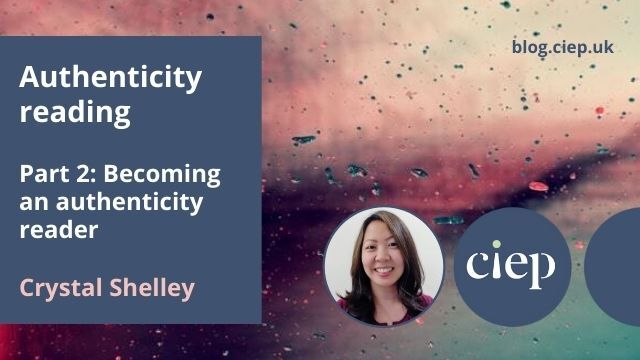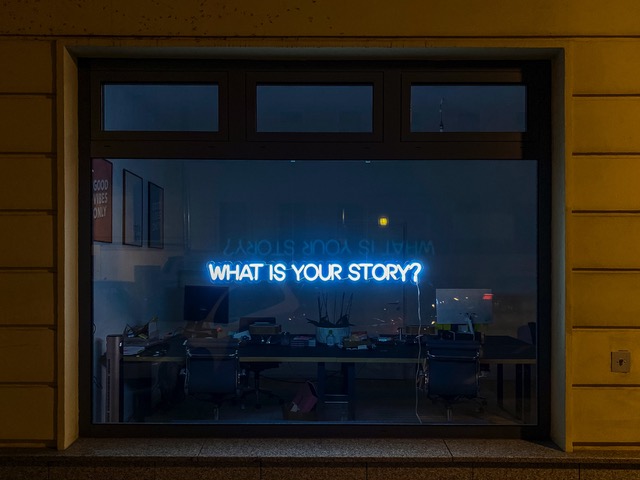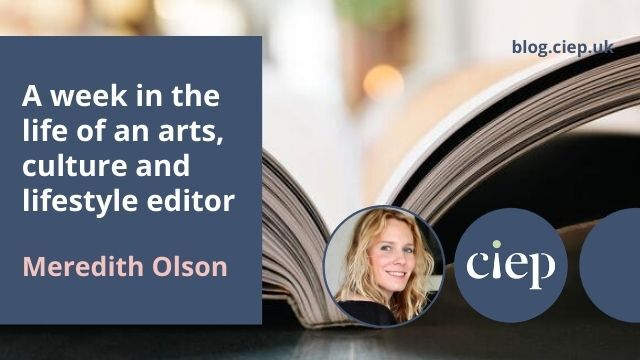Sue Littleford, our Flying solo columnist, looks at what changes we can make – to the way we run our businesses and to our personal decisions – to lessen our impact on the environment.
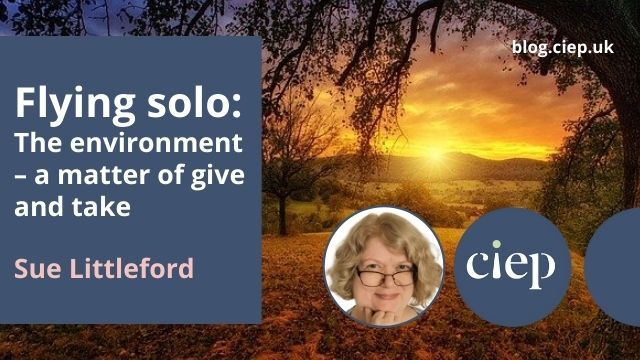 The environment of the only planet we have. Precious, irreplaceable. Under tremendous threat.
The environment of the only planet we have. Precious, irreplaceable. Under tremendous threat.
Where do editors and proofreaders fit into this?
Well, we have the CIEP’s own Environmental and Energy Policy, and the Working Group behind it. But what about our own relationship with the environment, on our small, individual basis as small businesses and individual people?
It’s a matter of give and take between it – the planet – and each one of us.
Enjoy it while it lasts
Sounds a bit pessimistic, doesn’t it? But a bit of appreciation goes a long way in motivating people to do their bit and, as payback, you get to revel in the glories of nature. Even small-scale, urban nature, even window boxes or posters of luscious landscape, or a small bowl, handmade and using beautiful reclaimed sycamore, picked up five years ago at Dogmersfield Show in Hampshire (OK, maybe that’s just me). Or maybe a paperweight made of a sapphire geode to remind you of the riches of the Earth?


So when you can, get out and get some air in your lungs. If you’re mobile, walk and stretch out your legs. If you’re not, find somewhere sheltered to sit with a new vista, perhaps near scented plants, or be sure to be watching at the window for changes in the weather, sunrises and sunsets and full moons and – light pollution permitting – stars.
And when you are out – look around you and seek out the beauty. What’s happening in the gardens you pass, or the trees? Look – really look, and let your shoulders drop. Appreciation of the natural world is a well-known balm.
Tanya Gold started #stetwalk, the Twitter tag for editors to post pictures of what they’ve seen on their daily walk. Check the hashtag to see where other editors live; not just on Twitter but on other social media, too. And from #stetwalk came #stetrun, #stetswim and #stetcycle (with offshoots #stetbike and #stetride). Doubtless there are some hashtags I’ve missed – pop them in the comments, please, and let others find them!
(If you’re a dedicated runner, think about joining the CIEP Run On Group on Facebook.)
Make it last longer
Freelance editors and proofreaders (and in-house ones, this last year or two) often work at home. For some, that means heating the house during the day whereas pre-working-from-home, you weren’t running the boiler all day. More expense, more fuel used, much of it fossil.
So – thermals. Honestly. And fingerless gloves. And getting up and moving around briskly every so often. I’m not saying turn the heating off during the day and freeze, but I am saying don’t heat your house to tropical temperatures in January and sit in a T-shirt.
When you feel it’s Covid-safe, working somewhere else that’s already heated will give you a change of scene and your boiler some time off. Try cafés and coffee shops, libraries and co-working spaces.
When your printer finally needs replacing, look at getting one that prints double-sided. I would have said they’re getting cheaper all the time but pandemic price rises appear to have occurred: my Brother DCP-L2510D A4 mono laser printer cost £82 two years ago, for instance, and current models seem now to be in the very low three figures.
And although we do (don’t we?) try not to print things that don’t truly need printing (not with toner prices what they are, let alone the wasted paper), we do have to print stuff sometimes, so why not halve your paper use?
(Actually, being pedantic, you won’t halve it, but you’ll get close. If you’re printing an odd number of pages, there’ll always be one blank side – but at least that reduces the mounds of spare paper you make into little notepads of scratch paper and take years to use up.)
Recycle used paper, and dispose of printer cartridges via a recycling system. As I write this, I have a toner cartridge waiting to go to the post office to be returned to the manufacturer for recycling. Don’t put them in the general household waste.
Make this your mantra: reduce, reuse, reduce, recycle.
Be a part of the solution
Don’t let scale put you off
It’s true that people editing and proofreading have less scope than, say, a small manufacturing business or a driving school or, indeed, a publisher, to cut emissions. But everything that each of us does adds to everything that everyone else does and that’s how revolutions happen.
COP26 will be held in Glasgow, 1–12 November, and that will focus governments once more on the issue. They will – I fervently hope – finally start taking care of the big stuff. We can make our own contributions to the small stuff. Always remember the moral of the Starfish Story.
Get information and get involved
Small Business Britain has a campaign, Small Business Planet, ‘to engage small businesses in climate action and encourage them to commit to making their business “net zero” ’, and I encourage you to join it. There are blog posts, webinars, events, pledges and news stories helping small businesses to find out how they can make their own contribution which, in aggregate, will have a far greater impact than you can imagine – but only if lots of businesses take part. And that’s all of us who freelance or work in our own companies.
Save energy
Take a look around your office – what do you leave powered-up overnight that you could turn off? What do you do with your rubbish? How often do you print things out? If your office is also your home, widen your contemplation to your entire realm. Could you turn your thermostat down by 1°C? Would you really notice the difference? If you’re in a part of the world where aircon is essential, could you adjust the settings by a similar small margin?
A UK news story last year claims that 17 million UK households could save £80 a year by turning down thermostats by 1°C. But it’s not just the money saved, though we could all do with that, it’s the fuel left in the ground that matters.
Let trees live
If you’re someone who prefers ‘real books’ to ebooks, think again about reducing the number of trees that need to be cut down and – importantly – replanted. Young trees are ineffective as carbon sinks. Trees harvested to make paper are typically less than 15 years old. Planting new trees isn’t a quick answer, so contribute to reducing the demand. Planting more trees in the higher latitudes actually contributes to global warming by reducing the albedo. In addition, only mature forests are effective carbon sinks – those a hundred years old or more.
On a similar theme, what about your garden waste? Do you have a bonfire of dead leaves in the autumn, or do you put them on a compost heap or use a council recycling scheme?
When planting your window boxes or your little patch of ground, do plant flowers that are bee- and butterfly-friendly. But use a peat-free compost for planting – drying out the peat ready for bagging releases an awful lot of methane, a far worse greenhouse gas than carbon dioxide. And, of course, the peat bogs that are such sinks for methane and other greenhouse gases are preserved. An old Guardian article from 2012 spells it out.
 Avoid landfill
Avoid landfill
Need to replace some computer kit? What are you going to do with the old stuff? Thanks to Caroline Beattie for finding Restart to donate the old kit to be reconditioned and reused in community projects in your locality. Margaret Hunter identified the Turing Trust, which does the same kind of thing. Far, far better than landfill! If there’s no Restart project near you, and you want to keep things local, then just google ‘donate computer near me’ or ‘donate printer near me’ and see what you can find. Lots of charities will take your old kit, either to reuse or to recycle correctly.
Alternatively, you could sell on your old kit (having removed all your personal info, of course) on eBay, and if it’s being retired because it’s faulty, advertise it as ‘spares or repair’, so there’s no comeback when a dead laptop doesn’t boot up.
Keep your wallet closed
Do you thrive on retail therapy? Why not have a no-spend month (an idea I think I got from Nancy Boston – if it was someone else, apologies!) and buy only the absolute essentials (food and the like), aside from your regular bills?
Learn to appreciate and use what you already have. Take something from your TBR pile rather than buy another book. (If your TBR pile is shrinking and nothing appeals, think of the library.) Rediscover things in your wardrobe rather than buy something new. Use one of your stack of notebooks rather than buy yet another one. (Again, just me? I don’t think so!)
I put a recurring appointment in my online calendar for each day of a no-spend month that reminds me not to spend on stuff I truly don’t need. What you do with the cash saved is up to you – but you might consider building up your rainy-day cushion for your business, or giving some or all of those savings to an environmental charity, or using it as a way to reduce debt.
Don’t take all that saved money, though, and have a retail splurge at month’s end. That kinda makes the exercise pointless from a carbon-reduction point of view!
Put your money where your mouth is
Consider moving your current account, your savings and/or your investments to ethical products. Try Good with Money for a list of providers.
Do you really need to travel so much?
And what about the really big one – travel? You know the drill – public transport when you can, walk or cycle when you can, rather than jump in your car. Many people will doubtless be yearning to get on a plane as soon as they can for a long-delayed getaway, if they’ve not already grabbed an earlier opportunity. But really, is a holiday only a holiday if you leave your own country? Really??
Even a trip to the supermarket is best avoided – getting your groceries delivered is better for the planet with academics as well as the invested agreeing.
Shop smart
While I’m on the subject of groceries, don’t think that buying local to reduce food miles is always the best idea. This is a horrendously involved subject but, in brief, the environmental cost of local produce out of season can be far higher than shipping or flying it in from somewhere where it is in season.
By all means buy local produce, but do be sure to buy it in season, when it hasn’t cost the Earth to grow it, and ideally not from a supermarket, where it may have travelled through several depots before arriving back close to home.
And don’t overbuy – putting your food straight into your bin (even if that’s a food waste recycling bin) costs everyone and everything.
Don’t always buy new, either. Be willing to seek out preloved versions of cars, furniture, books – all sorts. One person’s junk is another’s treasure. If no one is buying the things that we’re busy sending out virtuously into the world for reuse, the whole idea will collapse.
Stay alert for green opportunities!
Martin Lewis, the Money Saving Expert, has a list of 25 ways to go green and watch the pennies at the same time, keeping what’s junk to you out of landfill, and has guides on green banking, utilities and travel in the pipeline, as at the time of writing.
We live on Planet A. There is, as former UN Secretary-General Ban Ki-moon famously said in 2013, no Planet B.
If you’ve already been taking steps towards living and working in a sustainable way, thank you, thank you, thank you. If there’s anything else you think you can do, please do it. Add your ideas to the comments, so we can all get inspired!
About Sue Littleford
 Sue Littleford is the author of the CIEP guide Going Solo, now in its second edition. She went solo with her own freelance copyediting business, Apt Words, in March 2007 and specialises in scholarly humanities and social sciences.
Sue Littleford is the author of the CIEP guide Going Solo, now in its second edition. She went solo with her own freelance copyediting business, Apt Words, in March 2007 and specialises in scholarly humanities and social sciences.
 About the CIEP
About the CIEP
The Chartered Institute of Editing and Proofreading (CIEP) is a non-profit body promoting excellence in English language editing. We set and demonstrate editorial standards, and we are a community, training hub and support network for editorial professionals – the people who work to make text accurate, clear and fit for purpose.
Find out more about:
Posted by Abi Saffrey, CIEP blog coordinator.
The views expressed here do not necessarily reflect those of the CIEP.
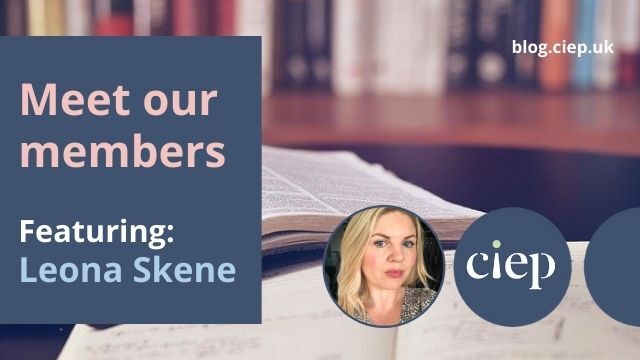 Why did you choose an editorial career, and how did you get into it?
Why did you choose an editorial career, and how did you get into it? What do you do if you’re struggling on a job?
What do you do if you’re struggling on a job? About the CIEP
About the CIEP






